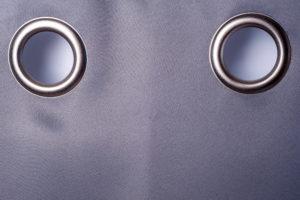
When you're buying a new bed runner, curtains, or furniture, you tend to focus on the material's look and feel. Sometimes, you'd check its durability and whether it stains easily or not. Often, fire safety is not a priority when selecting furnishing. With the introduction in 2005 of the Fire Safety Order, that has changed; your structure's Responsible Person now has to ensure compliance with the fire code.
They must work with or at least consult fabric suppliers known for selling flame-retardant curtains and other items. It is to ensure that the soft furnishings used in rooms and common areas are not only comfortable but also safe. Here is a closer look at why it is vital to use flame-retardant fabric for bed runners, curtains, and similar furnishing.
Does using flame retardant fabric help?
Building managers or owners looking to maintain low operating costs might hesitate to purchase a set of specialised fabrics for their facility. This sentiment is especially true for places that have plenty of soft furnishings in stock; replacing these with flame-retardant variants might seem taxing. Beyond compliance with government rules, switching to flame-retardant material keeps you safe in at least two ways.
First of all, this type of material burns slowly and self-extinguishes, which limits the spread of the flames. Second, these curtains reduce the heat build-up, which lowers the temperature in the room and prevents the likelihood of flashovers. When you install flame-retardant curtains, they are one line of defence among many a building administrator must use in communal facilities.
Is there only one kind of flame retardant fabric?
There are two; inherent and coated fabrics. Manufacturers make inherent fabric from yarn modified to have low flammability. With this type of cloth, the retardancy lasts the lifespan of the material, ensuring you meet legal requirements at all times.
Meanwhile, coated fabrics have a "topical" treatment that helps reduce their flammability. There are various FR-treated curtains available, offering different types of protection and requiring various kinds of care.
How do you determine these fabrics' effectiveness?
Several things affect how well your fabric resists flames. The level of occupancy, the presence of fire detection systems, fire access and other things contribute to the hazard score of an establishment. Generally, the FIRA or Furniture Industry Research Association designates restaurants, places of entertainment, and hotels as 'Medium Hazard.' Meanwhile, they consider offices, schools and museums 'Low Hazard'.
When you know which category your establishment falls under, you can determine the British Standard or BS you must find when furnishing the rooms. Items marketed as flame-retardant would indicate their level of certification, and the temperature at which you must wash them to ensure disinfection.
Note that you must have a fire safety risk assessment before buying any new products for your facility. Doing so ensures that you're buying the right type of fabric from the start.
Conclusion
Furnishing your home is already a challenging task; doing this for a public building or facility is even more so. With buildings, there are more people you need to consider, with a more diverse set of needs than you'd encounter in one family. Careful planning and consultation with fabric suppliers will help you decorate your facilities in the best way possible.
Direct Fabrics understands the need for stylish and functional soft furnishings. Our flame-retardant curtains are certified to British Standard, up to Part 2B and 2C. Browse our catalogue today or get in touch with us to learn more about our products.




